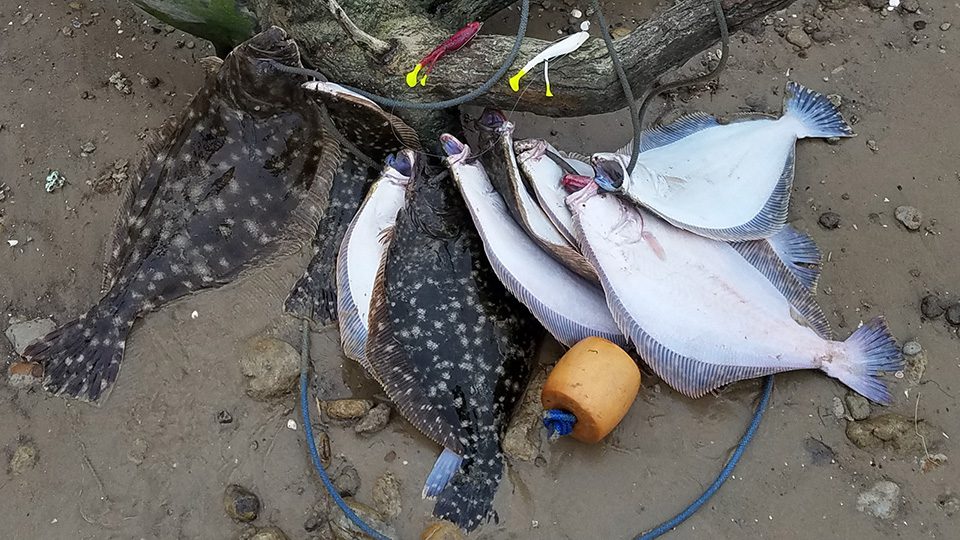
By Michael Okruhlik
As anglers, we are frequently faced with the decision to stay with the game plan or change to another. This is often amplified in the winter due to lethargic fish, less bait and unfavorable conditions. The first week of December, I took a day trip from Texas to Louisiana to target flounder and found myself with this dilemma.
Conditions:
Pre frontal—within 24 hours
Overcast
Start of the trip: Wind east 3 knots
End of the trip: Wind northeast 9 knots
Water Temp: 59 stayed constant
Air Temp: 58 rose to 59
Tide: Outgoing moderate increasing to strong
Water Clarity: Green, 1 foot visibility
Depth: 3 feet
I had not fished this exact area before, but I did some satellite research of the area prior to my departure. My plan was to cover a long stretch of shoreline along a channel varying my cast from shallow to deep. When I got there, I used this tactic for several hundred yards without a bite. I spoke to a few fishermen along the way who had similar results. As I continued my wade, I reached an area that started to slope down at a sharper angle and stayed in that area for a while. After catching a few flounder, I struck up a conversation with someone who educated me with the bottom structure of that area.
Now I knew this one area had the structure to hold fish longer than the desolate stretch I had previously walked. With this new-found knowledge, I decided to change my plan and spend the rest of my day planted in this spot.
The flounder bite was more aggressive if I kept my tandem-rigged soft plastics moving, but not necessarily forward. I found they were more interested if the lures were constantly jigging, but with little forward motion. Since I was wading in shallow water, I kept my rod tip high, rapidly moving my rod tip with short quick twitches. I would slowly turn my handle to retrieve the slightest amount of line. This action kept my lures wiggling on the bottom and only moving forward at a snail’s pace.
My change of plans to stay in this one area rather than pace back and forth along my pre-determined shoreline proved a wise choice giving up a limit of flounder. From my vantage point, I was able to see that others fishing in the area of my original plan didn’t fare as well.
Often in the winter, if I am confident in an area, I will typically stay longer than I would in other seasons waiting for the bite. The new-found structure in this area gave me that confidence.
Capt. Michael Okruhlik is the inventor of Controlled Descent Lures and the owner of www.MyCoastOutdoors.com.